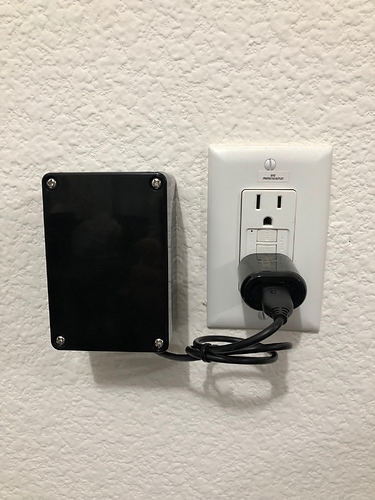I know the topic might be a little old but I have been looking to monitor for power loss on a couple of circuits. I decided to use a Smart Things water leak sensor (GP-U999SJVLCAA) and a 5V relay (Wingoneer KY-019 for arduino). Less money than going the contact sensor route.
Project was really simple. Hook up 5V from a USB cable/Charger to the 5V plus trigger side of the relay and then connect the relay normally closed contacts to the external sensor points on the water leak sensor. This way the sensor reports dry when power is present and wet when power is lost.
All built for less than $35



